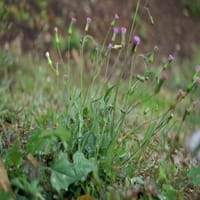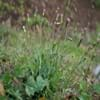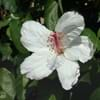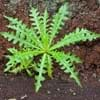Life Span
Annual
Perennial
Type
Flowering Plants
Flowering Plants, Fruits, Trees
Origin
Eastern Africa, Middle Africa, Southern Asia
Central America, Europe, North America
Types
Not Available
Not Available
Number of Varieties
Not Available
Habitat
Cultivated Beds
Hedge, Scrubs, Woods
USDA Hardiness Zone
8-11
4-8
AHS Heat Zone
8 - 1
Not Available
Sunset Zone
Not Available
Not Available
Habit
Upright/Erect
Not Available
Flower Color
Pink, Lavender, Violet
White
Flower Color Modifier
Bicolor
Not Available
Fruit Color
White, Brown
Yellow
Leaf Color in Spring
Green, Dark Green
Dark Green
Leaf Color in Summer
Dark Green
Green
Leaf Color in Fall
Dark Green
Brown, Green, Light Yellow
Leaf Color in Winter
Light Green
Not Available
Leaf Shape
Lyrate-pinnatilobed
Oblong
Plant Season
Summer
Summer
Sunlight
Full Sun, Partial Sun
Full Sun, Partial shade
Type of Soil
Clay, Loam
Loamy
The pH of Soil
Acidic, Neutral, Alkaline
Neutral
Soil Drainage
Well drained
Well drained
Bloom Time
Early Summer, Summer, Late Summer
Fall, Summer
Tolerances
Drought
Drought
Where to Plant?
Container, Ground, Pot
Ground
How to Plant?
Seedlings
Grafting, Seedlings, Transplanting
Plant Maintenance
Medium
Medium
Watering Requirements
Average Water Needs
Medium
In Summer
Lots of watering
Lots of watering
In Spring
Moderate
Moderate
In Winter
Average Water
Average Water
Soil pH
Acidic, Alkaline, Neutral
Neutral
Soil Type
Clay, Loamy, Sandy
Loamy
Soil Drainage Capacity
Well drained
Well drained
Sun Exposure
Full Sun, Partial Sun
Full Sun, Partial shade
Pruning
Remove damaged leaves, Remove dead branches, Remove dead leaves
Prune when plant is dormant, Remove dead or diseased plant parts
Fertilizers
Self-fertile
All-Purpose Liquid Fertilizer
Pests and Diseases
Ascochyta blight, Bacterial Blight, Powdery mildew
Aphids, Curculio occidentis, Japanese Beetles, Leaf Rollers, Leafminer, Mites, Red blotch, sawflies, Scale, Stink bugs
Plant Tolerance
Drought
Drought
Flower Petal Number
Single
Single
Foliage Texture
Coarse
Medium
Foliage Sheen
Matte
Matte
Attracts
Butterflies
Not Available
Allergy
no allergic reactions
Digestive Problems, Respiratory problems
Aesthetic Uses
Showy Purposes
Showy Purposes
Beauty Benefits
Not Available
Beautiful Skin
Environmental Uses
Air purification
Food for birds
Medicinal Uses
Astringent, Depurative, Diaphoretic, Diuretic, Expectorant, Febrifuge, Odontalgic, Ophthalmic
Anthelmintic, Antibacterial, Astringent, Hypnotic, Laxative, Refrigerant
Part of Plant Used
Flowers, Leaves, Shoots
Fruits
Other Uses
Used as a vegetable
Edible syrup, Jam, Jelly, Used As Food
Used As Indoor Plant
No
No
Used As Outdoor Plant
Yes
Yes
Garden Design
Mixed Border
Not Available
Botanical Name
EMILIA sonchifolia
Malus sylvestris
Common Name
Consumption Weed, Lilac Tasselflower, Shaving Brush
European crab apple
In Hindi
Shaving Brush
european crab apple
In German
Rasierpinsel
Der Holzapfel, Europäischer Wildapfel
In French
Blaireau
Le Boquettier, le Pommier sauvage ou Pommier des bois
In Spanish
Brocha de afeitar
Malus sylvestris, el Manzano silvestre, manzano silvestre europeo
In Greek
Βούρτσα ξυρίσματος
Ευρωπαϊκή μήλο καβουριών
In Portuguese
Pincel de barba
Malus sylvestris
In Polish
Pędzel do golenia
Jabłoń dzika
In Latin
Tondenti Peniculus
european crab apple
Phylum
Magnoliophyta
Magnoliophyta
Class
Magnoliopsida
Magnoliopsida
Family
Asteraceae
Rosaceae
Clade
Angiosperms, Asterids, Eudicots
Angiosperms, Eudicots, Rosids
Tribe
Senecioneae
Not Available
Subfamily
Asteroideae
Not Available
Number of Species
Not Available
Not Available
Properties of Shaving Brush and European Crab Apple
Wondering what are the properties of Shaving Brush and European Crab Apple? We provide you with everything About Shaving Brush and European Crab Apple. Shaving Brush doesn't have thorns and European Crab Apple doesn't have thorns. Also Shaving Brush does not have fragrant flowers. Shaving Brush has allergic reactions like no allergic reactions and European Crab Apple has allergic reactions like no allergic reactions. Compare all the properties and characteristics of these two plants. Find out which of these plant can be used as indoor plant. If you are interested to decorate your house and garden, find out aesthetic uses, compare them and select the plant which will beautify your surrounding. Along with beautification, try comparing medicinal and edible uses of Shaving Brush and European Crab Apple and you can choose the plant having best and most benefits.
Season and Care of Shaving Brush and European Crab Apple
Season and care of Shaving Brush and European Crab Apple is important to know. While considering everything about Shaving Brush and European Crab Apple Care, growing season is an essential factor. Shaving Brush season is Summer and European Crab Apple season is Summer. The type of soil for Shaving Brush is Clay, Loam and for European Crab Apple is Loamy while the PH of soil for Shaving Brush is Acidic, Neutral, Alkaline and for European Crab Apple is Neutral.
Shaving Brush and European Crab Apple Physical Information
Shaving Brush and European Crab Apple physical information is very important for comparison. Shaving Brush height is 45.70 cm and width 30.50 cm whereas European Crab Apple height is 25.00 cm and width 20.00 cm. The color specification of Shaving Brush and European Crab Apple are as follows:
Shaving Brush flower color: Pink, Lavender and Violet
Shaving Brush leaf color: Green and Dark Green
European Crab Apple flower color: White
- European Crab Apple leaf color: Dark Green
Care of Shaving Brush and European Crab Apple
Care of Shaving Brush and European Crab Apple include pruning, fertilizers, watering etc. Shaving Brush pruning is done Remove damaged leaves, Remove dead branches and Remove dead leaves and European Crab Apple pruning is done Prune when plant is dormant and Remove dead or diseased plant parts. In summer Shaving Brush needs Lots of watering and in winter, it needs Average Water. Whereas, in summer European Crab Apple needs Lots of watering and in winter, it needs Average Water.





